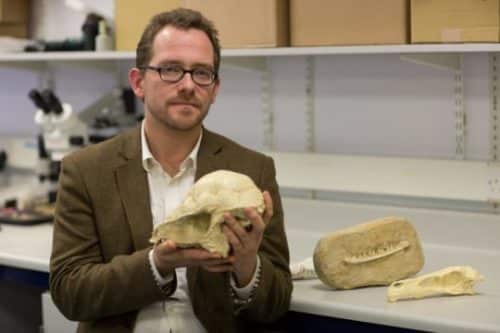A study shows that over ninety percent of the mammal species were wiped off the face of the earth by the same asteroid that wiped out the dinosaurs in the Cretaceous period, 66 million years ago, a significantly higher rate than previously thought, but the rate of their recovery caused them to fill the gap and even double the number of species within 300 A thousand years only

In a study conducted by researchers at the Milner Center for Evolution at the British University of Bath and published in the journal Evolutionary Biology, they examined samples of all known mammal species from the end of the Cretaceous period in North America. Their results showed that over 93% of hinnok species went extinct at the Cretaceous-Tertiary boundary, but that the mammals also recovered much faster than previously thought.
The scientists analyzed fossils discovered in western North America that range in age from two million years before the Cretaceous-Tertiary boundary to 300,000 years after the asteroid hit. They compared the diversity of species before and after this extinction event to assess the severity of the event, and the speed of recovery of the mammals. Extinction rates turned out to be much higher than previous estimates based on smaller databases.
Dr. Nick Lundrich from the Milner Center for Evolution in the Department of Biology and Biochemistry of the University of Bath, explained: "The species most vulnerable to extinction are also the rarest ones. The species that tend to survive are more common and therefore we tend to find them.
"The fossil record is biased in favor of surviving species. To the extent that something looks bad so far, the inclusion of more data shows that the extinction was much more severe than we previously believed."
The researchers say that the reason for underestimating the severity of the event by scientists in the past was simply due to a lack of data, as we collect more fossils we discover more and more extinct species.
Following the impact of the asteroid, most of the plants and animals died. The survivors probably fed on insects and eating dead plants and animals. Due to the scarcity of food, only small species survived. The largest animals that survived on land were no bigger than a cat. The fact that most mammals were small helps explain why they managed to survive.
However, the researchers found that the mammals also recovered faster than previously thought. They not only regained the diversity that existed before the extinction of most species but also almost doubled the number of species. The recovery took only 300,000 years, a short time in evolutionary terms.
Adds Dr. Longrich: "Since mammals recovered quickly after the extinction, we tend to assume that it did not hurt them badly and yet our analysis shows that mammals were affected more than most groups of animals, such as lizards, turtles, crocodiles, but they also managed to recover better from them.
"These were not low extinction rates, but the ability to recover and adapt to the new conditions, led the mammals to take over the world.
Surprisingly, the recovery from extinction took place differently in different parts of the continent. The species found in Montana were different from those found in nearby Wyoming.”
"One would expect to see the same survivors all over the continent, but that's not what we found," says Longrich. "After this extinction event, there was an explosion of diversity, created by the simultaneous occurrence of different evolutionary experiments in different places.
"It may have helped speed up the recovery. With so many different species developing in different directions in different parts of the world, evolution had a greater chance of finding new paths.”
to the notice of the researchers
More of the topic in Hayadan:

2 תגובות
I liked the titles only
The Galapagos Islands show us that a variety of habitats causes evolutionary diversity. In a paraphrase (which may not be appropriate - "man is the pattern of his native landscape"). Does anyone know what happened to the elasmosaurus, which was buried in the prairie? It is a predatory reptile, 8 meters long. It became extinct 85 million years ago in the which was the Tethys Sea.